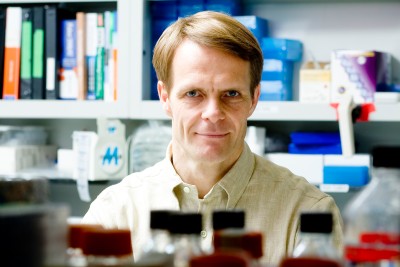
Lorenz Studer
A team of Memorial Sloan Kettering investigators has reported for the first time a novel strategy to coax human embryonic stem cells (HESCs) to develop into cells that could potentially be used to repair the musculoskeletal system, including bone, cartilage, and muscle.
The researchers, led by Lorenz Studer of the Developmental Biology Program in the Sloan Kettering Institute, achieved these results by exposing the HESCs — which have the potential to develop into every kind of cell in the body — to conditions that mimic the normal development of muscle cells in embryos.
In the past, efforts to develop cell-based therapies for muscle disorders, including injuries and various types of muscular dystrophy in children, have been hampered by the lack of suitable cells that could be transplanted or grafted into the body to repair muscle affected by disease or injury. Here, the team was able to generate virtually unlimited numbers of the cells to be used for future research, including studies of the basic biology of human muscle cells and using them to treat mouse models affected by muscle diseases that closely mimic the types of diseases seen in humans.
To confirm that the muscle cells would be viable long term, the investigators labeled them with a fluorescent protein and transplanted them into mouse models of muscle injury. They determined that the human cells survived in the mice up to six months after transplantation, and that the mice did not form tumors from the transplanted cells.
“These data are very encouraging and suggest that skeletal muscle cells derived from HESCs may become a powerful tool for basic studies and for cell therapy in skeletal-muscle disease,” Dr. Studer said. “The next step in this work will involve testing the therapeutic effect of these cells in various animal models of muscle disease.”
The study was published in the May 1 issue of Nature Medicine. [PubMed Abstract]
